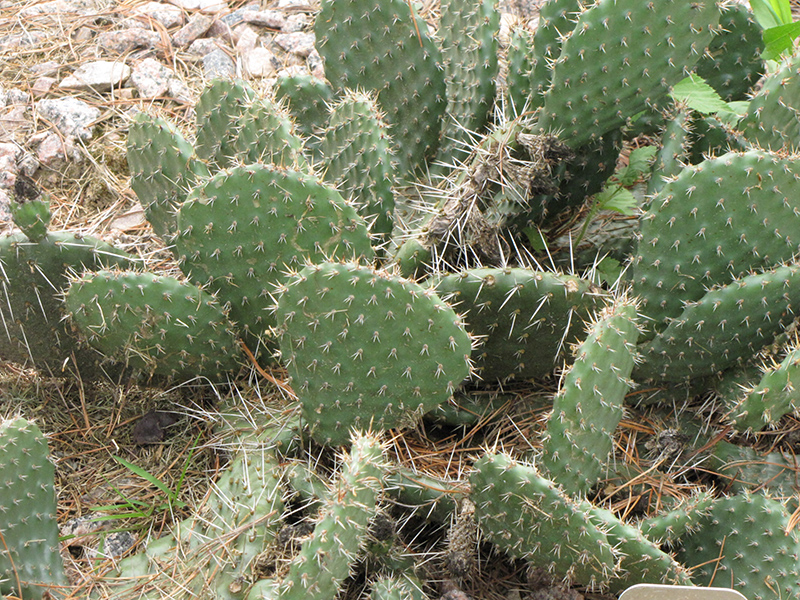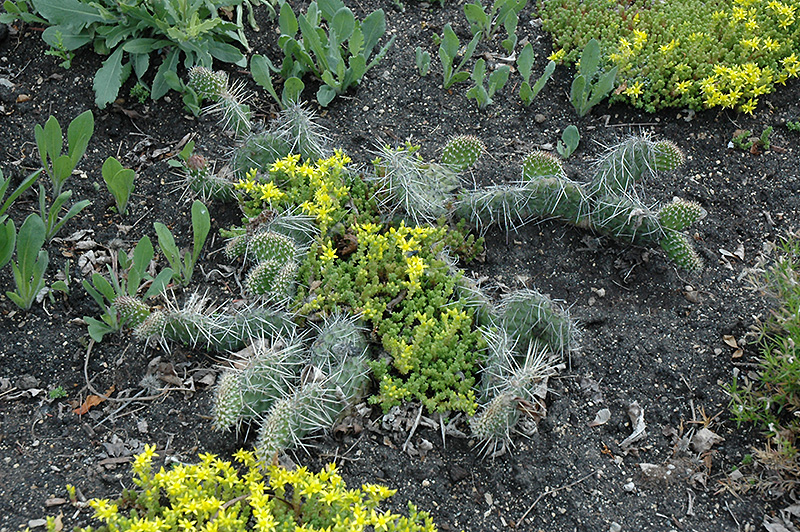Height: 12 inches
Spread: 3 feet
Sunlight:
![]()
Hardiness Zone: 5a
Group/Class: Native
Ornamental Features
Prickly Pear Cactus is a member of the cactus family, which are grown primarily for their characteristic shapes, their interesting features and textures, and their high tolerance for hot, dry growing environments. Like all cacti, it doesn't actually have leaves, but rather modified succulent stems that comprise the bulk of the plant, and which are designed to hold water for long periods of time. This particular cactus is valued for its spreading habit of growth This plant has lemon yellow cup-shaped flowers with peach streaks at the ends of the stems in mid summer, which are interesting on close inspection. It features an abundance of magnificent burgundy berries .
Landscape Attributes
Prickly Pear Cactus is a small succulent evergreen plant with a spreading habit of growth that trails along the ground. As a type of cactus, it has no true foliage; the body of the plant is wholly comprised of one or more spiny grayish green stems.
This plant will require occasional maintenance and upkeep, and should never be pruned except to remove any dieback, as it tends not to take pruning well. Deer don't particularly care for this plant and will usually leave it alone in favor of tastier treats. Gardeners should be aware of the following characteristic(s) that may warrant special consideration;
- Spiny
Prickly Pear Cactus is recommended for the following landscape applications;
- Rock/Alpine Gardens
Planting & Growing
Prickly Pear Cactus will grow to be about 12 inches tall at maturity, with a spread of 3 feet. It is often either grown as a solitary specimen or permitted to grow into a broader colony as part of a garden composition. It grows at a medium rate, and under ideal conditions can be expected to live for approximately 5 years.
This plant should only be grown in full sunlight. It requires an extremely dry, well-drained growing location, and will usually die in standing water. It is considered to be drought-tolerant, and thus makes an ideal choice for a low-water garden or xeriscape application. It is not particular as to soil pH, but grows best in sandy soils. It is quite intolerant of urban pollution, therefore inner city or urban streetside plantings are best avoided. This species is native to parts of North America. It can be propagated by division.
Sizes Available:
8" CONT $15.49


